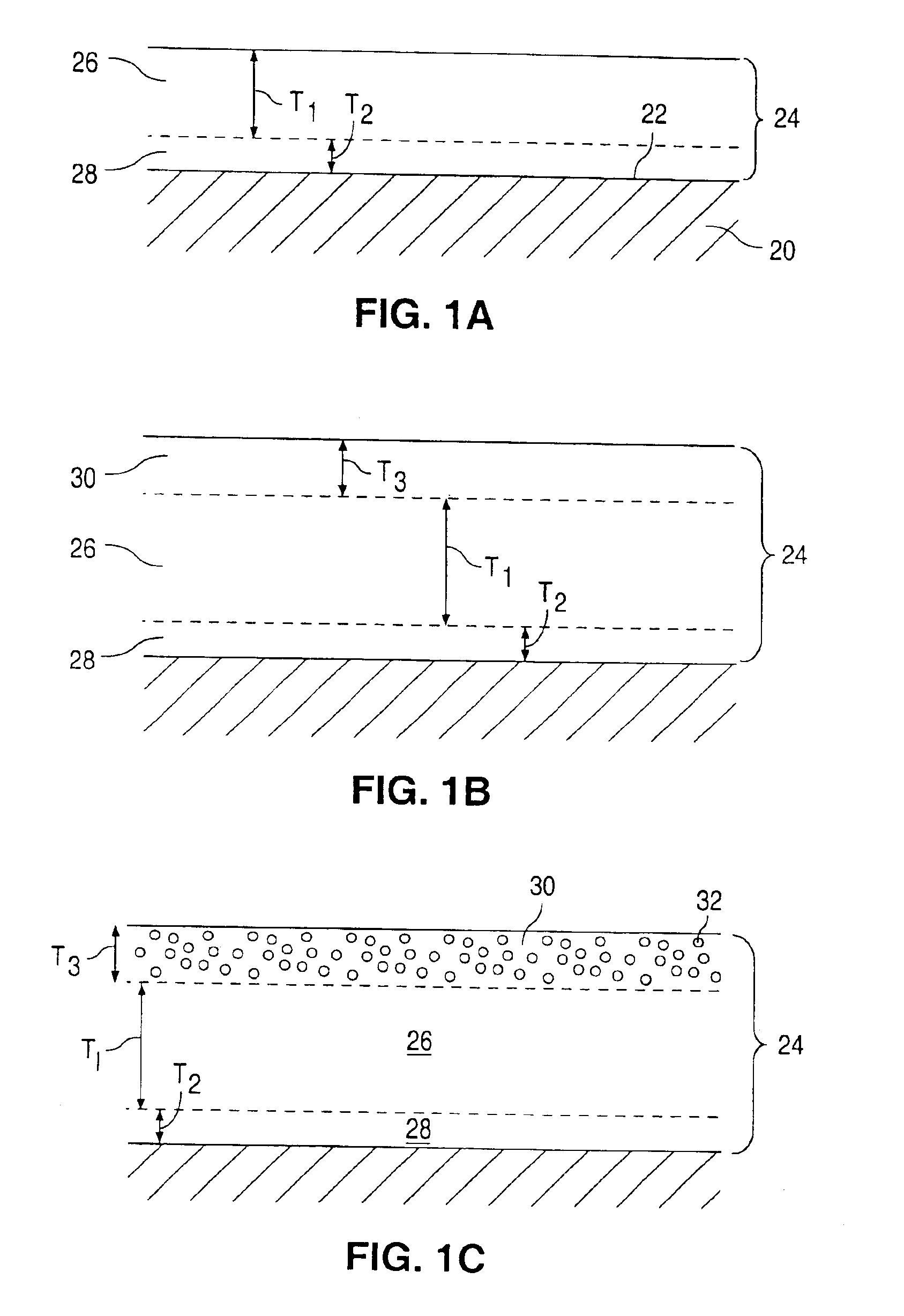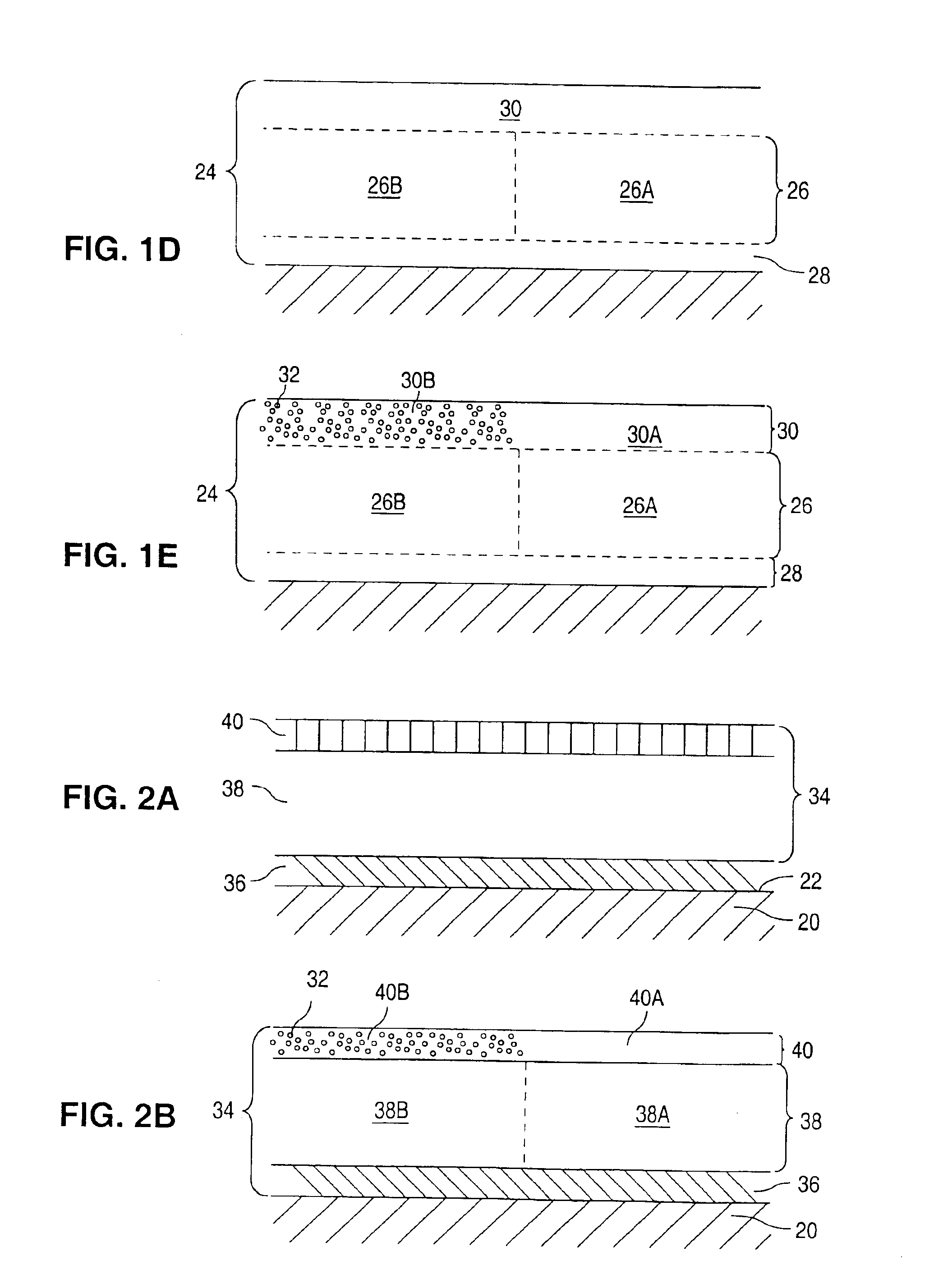Coating for implantable devices and a method of forming the same
- Summary
- Abstract
- Description
- Claims
- Application Information
AI Technical Summary
Benefits of technology
Problems solved by technology
Method used
Image
Examples
example 1
[0109]Multi-Link™ stents (available from Guidant Corporation) were cleaned by placement in an ultrasonic bath of isopropyl alcohol solution for 10 minutes. The stents were dried and plasma cleaned in a plasma chamber. An EVAL solution was made with 1 gram of EVAL and 7 grams of DMSO, making an EVAL:DMSO ratio of 1:7. The mixture was placed in a warm water shaker bath at 60° C. for 24 hours. The solution was cooled and vortexed. The cleaned Multi-Link™ stents were dipped in the EVAL solution and then passed over a hot plate, for about 3-5 seconds, with a temperature setting of about 60° C. The coated stents were heated for 6 hours in an air box and then placed in an oven at 60° C., under vacuum condition, and for 24 hours. The coated stents were expanded on a 4.0 mm angioplasty balloon. The coatings remained intact on the stents. The coatings were transparent giving the Multi-Link™ stents a glossy-like shine.
example 2
[0110]Multi-Link™ stents were cleaned by placement in an ultrasonic bath of isopropyl alcohol solution for 10 minutes. The stents were dried and plasma cleaned in a plasma chamber. An EVAL solution was made with 1 gram of EVAL and 4 grams of DMSO, making an EVAL:DMSO ratio of 1:4. Dexamethasone was added to the 1:4 EVAL:DMSO solution. Dexamethasone constituted 9% by weight of the total weight of the solution. The solution was vortexed and placed in a tube. The cleaned Multi-Link™ stents were attached to mandrel wires and dipped into the solution. The coated stents were passed over a hot plate, for about 3-5 seconds, with a temperature setting of about 60° C. The coated stents were cured for 6 hours in an air box and then placed in a vacuum oven at 60° C. for 24 hours. The above-recited step was repeated twice. The average weight of the coating was 0.0003 gram, having an estimated dexamethasone content of 75 ug per stent. The coated stents were expanded on a 4.0 mm angioplasty balloo...
example 3
[0111]Multi-Link Duet™ stents are cleaned by placement in an ultrasonic bath of isopropyl alcohol solution for 10 minutes. The stents are dried and plasma cleaned in a plasma chamber. The EVAL solution is made with 1 gram of EVAL and 4 grams of DMSO, making an EVAL:DMSO ratio of 1:4. Dexamethasone is added to the 1:4 EVAL:DMSO solution. Dexamethasone constitutes 9% by weight of the total weight of the solution. The solution is vortexed and placed in a tube. The cleaned Multi-Link™ stents are attached to mandrel wires and dipped into the solution. The coated stents are passed over a hot plate, for about 3-5 seconds, with a temperature setting of about 60° C. The coated stents are cured for 6 hours in an air box then placed in a vacuum oven at 60° C. for 24 hours. The single layered dexamethasone / EVAL coated stents are dipped into the 1:4 ratio EVAL:DMSO solution, free from dexamethasone. The stents are passed over the hot plate, cured, and placed in the oven as previously described. ...
PUM
| Property | Measurement | Unit |
|---|---|---|
| Fraction | aaaaa | aaaaa |
| Percent by mass | aaaaa | aaaaa |
| Thickness | aaaaa | aaaaa |
Abstract
Description
Claims
Application Information
 Login to View More
Login to View More - R&D
- Intellectual Property
- Life Sciences
- Materials
- Tech Scout
- Unparalleled Data Quality
- Higher Quality Content
- 60% Fewer Hallucinations
Browse by: Latest US Patents, China's latest patents, Technical Efficacy Thesaurus, Application Domain, Technology Topic, Popular Technical Reports.
© 2025 PatSnap. All rights reserved.Legal|Privacy policy|Modern Slavery Act Transparency Statement|Sitemap|About US| Contact US: help@patsnap.com



